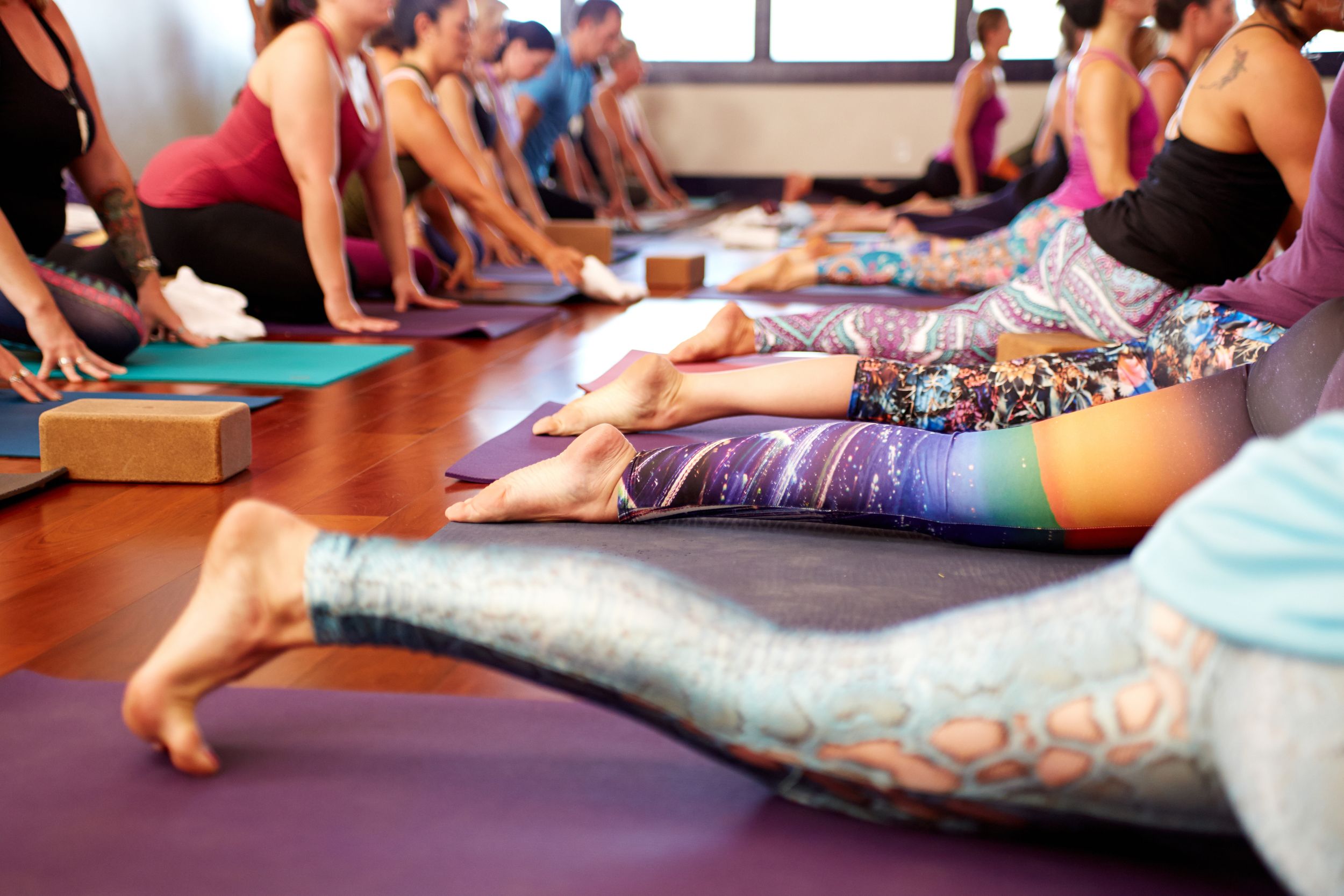If you want to make your yoga practice (or any practice for that matter) a more meaningful act, take a look at what us yogis call the koshas, or five layers of our being. For each of the layers (ordered below from gross to subtle), I ask myself a few questions that ground me and ignite a process of “peeling back the onion layers,” as I like to call it.
Before we go through each of the layers, imagine a situation you might feel nervous about undertaking. Perhaps you are about to start a yoga class, interview for a new job, or have a difficult conversation with someone. Here are some questions that explore each of the layers – and are great to keep in your back pocket!
- Physical body (annamaya kosha): our outermost layer related to sensations, nourishment, and touch
- What do I want to embody? Can I embody the way I want to feel? When am I most comfortable in my skin?
- Energetic layer (pranamaya kosha): the oxygen we take in and carbon dioxide we release; the life force that ignites energy in our beings
- What inspires me? How do I want others to feel when I leave the room? What unhealthy behavior do I want to change in myself? Can I take three breaths in and three breaths out before engaging in it?
- Emotional sheath (manomaya kosha): emotions stirred by our practice; thoughts comprised of memories, fears, impulses
- How do I want to feel? Am I surrounding myself with people and activities that balance my emotional life?
- Intellectual body (vijnanamaya kosha): intellectual stimulation; the need to stretch and strengthen the brain; decisions, discernment, study, etc.
- Who am I? What is my purpose? When does my intellectual layer thrive?
- Blissful layer (anandamaya kosha): spiritual aspect; most inner layer of your being; a state of alignment with your soul’s desire (the part of us that is connected to everything and everyone else in the universe)
- How am I following my bliss? How am I the hero of my own journey? What is an act of spiritual generosity that I can do for someone else?
Consider these questions the next time you’re in an uncomfortable situation – or even if you simply want to get curious about your experience and explore the niyama of svadhyaya, or self-study. Keep these questions handy, perhaps written on a tiny piece of paper you can keep in your back pocket (or, even better, written on your dominant palm!).
For further reading, I recommend these books:














